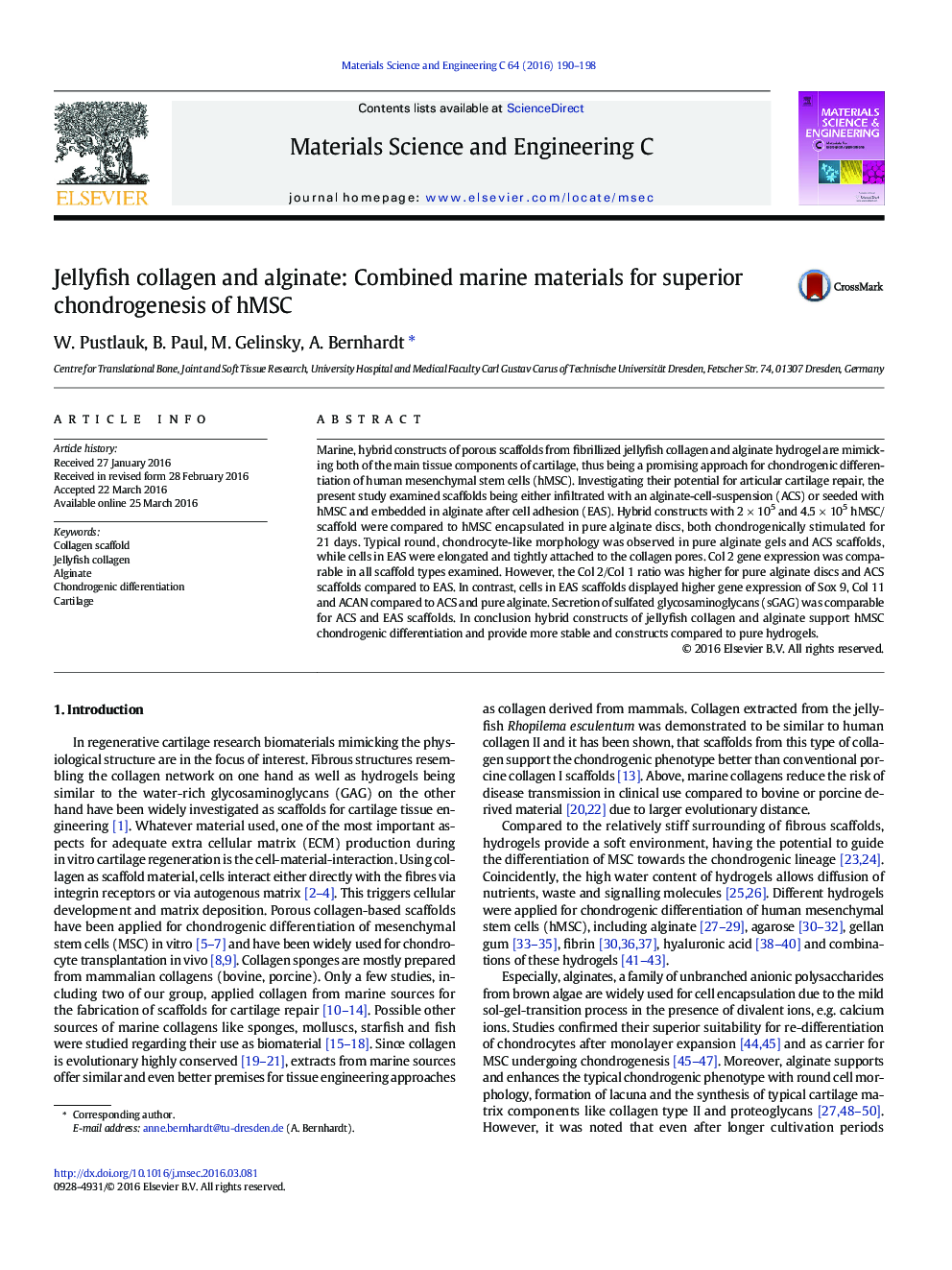| Article ID | Journal | Published Year | Pages | File Type |
|---|---|---|---|---|
| 1427950 | Materials Science and Engineering: C | 2016 | 9 Pages |
Abstract
Marine, hybrid constructs of porous scaffolds from fibrillized jellyfish collagen and alginate hydrogel are mimicking both of the main tissue components of cartilage, thus being a promising approach for chondrogenic differentiation of human mesenchymal stem cells (hMSC). Investigating their potential for articular cartilage repair, the present study examined scaffolds being either infiltrated with an alginate-cell-suspension (ACS) or seeded with hMSC and embedded in alginate after cell adhesion (EAS). Hybrid constructs with 2Â ÃÂ 105 and 4.5Â ÃÂ 105Â hMSC/scaffold were compared to hMSC encapsulated in pure alginate discs, both chondrogenically stimulated for 21Â days. Typical round, chondrocyte-like morphology was observed in pure alginate gels and ACS scaffolds, while cells in EAS were elongated and tightly attached to the collagen pores. Col 2 gene expression was comparable in all scaffold types examined. However, the Col 2/Col 1 ratio was higher for pure alginate discs and ACS scaffolds compared to EAS. In contrast, cells in EAS scaffolds displayed higher gene expression of Sox 9, Col 11 and ACAN compared to ACS and pure alginate. Secretion of sulfated glycosaminoglycans (sGAG) was comparable for ACS and EAS scaffolds. In conclusion hybrid constructs of jellyfish collagen and alginate support hMSC chondrogenic differentiation and provide more stable and constructs compared to pure hydrogels.
Related Topics
Physical Sciences and Engineering
Materials Science
Biomaterials
Authors
W. Pustlauk, B. Paul, M. Gelinsky, A. Bernhardt,
